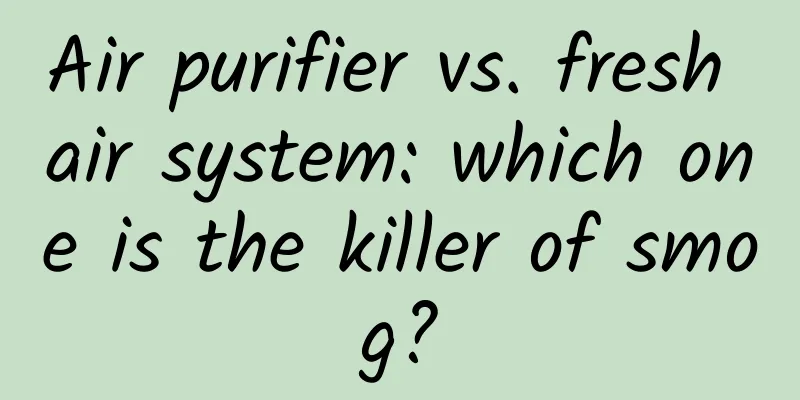Willful "membrane"! Only allows carbon dioxide to "pass"?

|
Author: Mo Zunli and Lv Wenbo Recently, the latest issue of the international journal Nature Energy reported a new membrane technology developed by an international research team that can effectively use humidity differences to separate carbon dioxide from the air, which will help to address environmental problems caused by excessive carbon dioxide emissions. The development of separation membrane technology provides a new way to capture and separate carbon dioxide, which can help humans achieve carbon neutrality goals as soon as possible. Membranes are materials with selective separation functions. Since the objects to be separated are liquids and gases, they can be divided into liquid separation membranes and gas separation membranes. High-performance carbon dioxide gas separation membranes are the focus of research and development in today's industrial field. Gas separation membranes can be used to separate carbon dioxide from mixed gases, selectively allowing carbon dioxide to pass through and restricting the entry and exit of other gases based on factors such as molecular size, shape or affinity. The material, thickness, pore size, pressure difference, permeability, and selectivity of the membrane can all affect the performance of the membrane. Mixed pollutant gas sources containing carbon dioxide often contain sulfur oxides and nitrogen oxides, so it is necessary to selectively separate carbon dioxide from the mixed gas to control its emission content. Gas separation membranes can be made from a variety of materials, including organic polymers, inorganic materials, and mixed matrix materials. Organic polymer membranes are low-cost and can be manufactured on a large scale. Various organic polymer membranes can be used for carbon dioxide separation, such as cellulose acetate, polysulfone, polyethersulfone, polyacrylate, polyamide, etc. However, it should be noted that organic polymer materials have poor acid resistance and poor selectivity when carbon dioxide is mixed in acidic gases, so its concentration should not be too high. It is suitable for the removal and enrichment of low-concentration carbon dioxide in the gas produced by natural gas and oil fields. Inorganic membranes are made of porous inorganic materials, such as zeolite molecular sieves, silica ceramics, etc. Inorganic membranes have better thermal stability and are suitable for separating carbon dioxide from high-temperature flue gas. Silica ceramic membranes usually use alumina, zirconium oxide, titanium oxide, etc. as the matrix and are formed by high-temperature sintering. The ceramic structure has a strong surface and interface effect, as well as excellent selectivity. Zeolite is an alkaline earth metal aluminum silicate mineral with regular pores and is used to make zeolite molecular sieve membranes. Zeolite membranes have the advantages of high selectivity, high permeability, and thermal stability, and are of great value in carbon dioxide separation applications. The DD3R zeolite molecular sieve membrane designed by Professor Gu Xuehong's team at Nanjing University of Technology can achieve a separation selectivity of 1172 when separating a mixture of carbon dioxide and methane, that is, only 1 methane molecule passes through the membrane for every 1172 carbon dioxide molecules. In mixed matrix membranes, organic polymers serve as the matrix and inorganic components serve as fillers. Inorganic fillers usually include metal organic frameworks, covalent organic frameworks, carbon nanotubes, graphene oxide, etc. They are dispersed in the matrix in the form of nanoparticles or microparticles to synergistically constitute the mixed matrix membrane. Mixed matrix membranes have both the flexibility of organic polymers and the porous properties of inorganic components, and often show high permeability and selectivity in carbon dioxide separation. Professor Li Xueqin's team at Shihezi University in Xinjiang integrated covalent organic frameworks into metal-organic framework materials and successfully prepared a new composite material, which was then incorporated into a polyether block polyamide matrix to prepare a mixed matrix membrane for carbon dioxide separation. Compared with pure polyether block polyamide membranes, the separation performance of mixed matrix membranes is significantly improved. Studies have found that composite materials can expose more Lewis basic sites and open metal sites, thereby enhancing the selectivity of mixed matrix membranes for carbon dioxide. Compared with traditional separation technologies, separation membrane technology is low-cost, easy to scale, and has a relatively low threshold. However, as a young technology, the development of carbon dioxide separation membranes in the industry has yet to be promoted. Research should be integrated with actual production to use the "membrane" method to help achieve carbon neutrality. (The author Mo Zunli is a professor and doctoral supervisor at Northwest Normal University, and Lv Wenbo is a master's student at Northwest Normal University) |
<<: Amazing! Have you ever seen a plant with its own vase?
Recommend
How much does a POS machine cost? (How to apply for a POS machine? Is there any fee?)
What should you do when you urgently need to appl...
Group buying fission: How does community e-commerce play with "mini program + distribution"?
A few years ago, a neighbor sent me some fruits. ...
When doing new media marketing in 2019, these 5 trends must be paid attention to!
There were many successful marketing cases in 201...
National K song product analysis!
As people's lives become increasingly fragmen...
The 4 most important performance indicators for enterprise-level Java applications
Application Performance Management (APM) is a sys...
What is the Himalayan tree line? What is its use?
Image source: Beijing Daily The alpine treeline, ...
Kong Wei: Learn English by reading Pride and Prejudice
Kong Wei: Reading "Pride and Prejudice"...
Chinese Valentine's Day copywriting, I finally waited for you!
Please note that the dog-torturing Chinese Valent...
Facing complex road conditions, how does a manned lunar rover master all its skills?
Recently, the design of my country's manned l...
How to apply for a WeChat Mini Program account? How does a company register and develop a mini program?
Q: How to apply for a WeChat Mini Program account...
Why does the last 1% of battery in a mobile phone last so long?
How would you feel when your phone only has 1% ba...
Awkward! A pair of turtles turned into fossils during mating! 47 million years later, people still have to watch...
Expert of this article: Liu Yadan, former assista...
What is the technology behind the popular AI painting? (Part 1)
Making machines creative has always been one of t...
Model S adds a new all-glass transparent sunroof for just 10,000 yuan
Elon Musk seems to be paying special attention to...
Why do Chinese people have to eat something red during Chinese New Year?
Written by Wei Shuihua Header image | Visual Chin...





![Specific virtual project disassembly, playing with short video materials, single store monthly income of tens of thousands + [Video Course]](/upload/images/67cc144601b98.webp)



